Dinghies: It doesn't always have to be an inflatable boat - alternatives and accessories
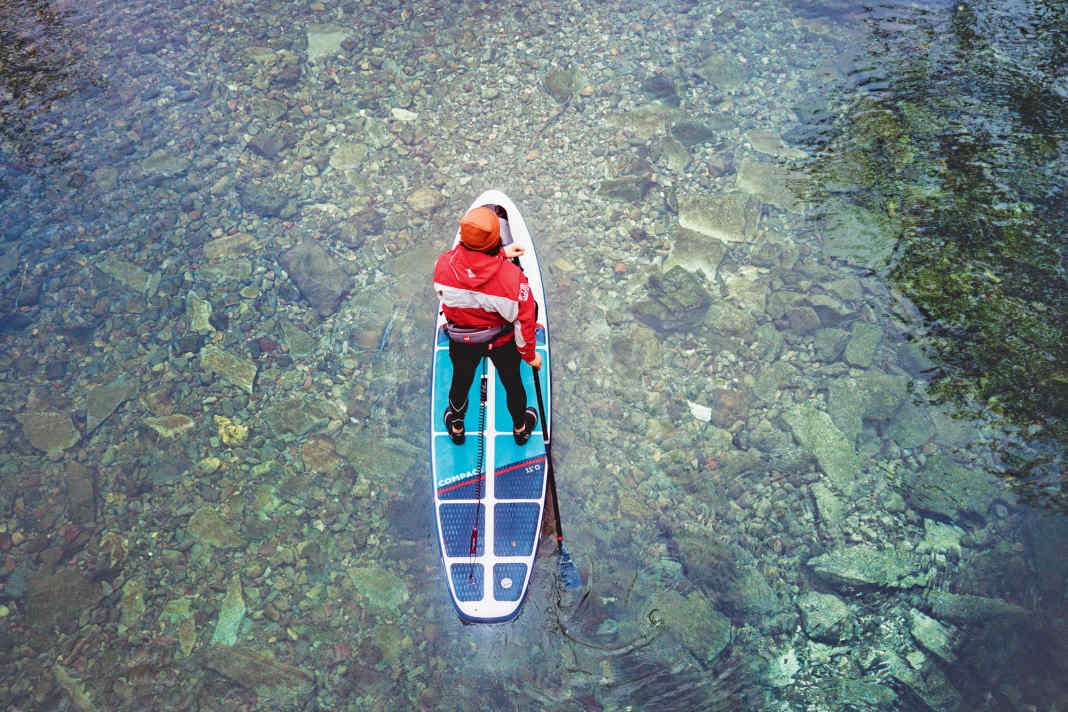





For many yacht owners, the classic dinghy is a given: an inflatable boat with oars, perhaps with a small outboard motor, robust, familiar, but often heavy, bulky and not exactly space-saving. But if you take a closer look in the harbour, you soon realise that there are now many clever alternatives that are lighter, more compact or simply more versatile. And the requirements for a dinghy are as varied as the crews themselves. Sometimes it's just about a short shore leave from the anchorage, sometimes it's about supplying fresh produce, sometimes it's about short exploratory tours along the coast. Those who travel a lot may also be thinking about an emergency boat, while others are looking for a mobile bathing raft or simply something that takes up as little space as possible in everyday life on board.
Also interesting:
Although classic inflatable boats offer plenty of buoyancy and space, they also need storage space, mean handling and often require a bracket at the stern or on the foredeck. Those who don't have or don't want this are increasingly turning to more flexible solutions. Lightweight products such as inflatable stand-up paddle boards, compact inflatable boats or foldable kayaks can now be packed surprisingly small, often weigh less than ten kilos and easily fit in the back box. This makes the dinghy not only space-saving, but also spontaneously usable - inflate, paddle off, done.
Versatile solutions for every need
Many of these alternatives have surprisingly good handling characteristics and are sufficient for one person. Larger models also offer space for two people and light luggage. And they often have an additional benefit: They are sports equipment, leisure platforms or simply toys for big and small children alike. But it's not just about paddling. Many inflatable boats or SUPs can be retrofitted with motors, and some can even sail. And anyone who regularly sets up and takes down will quickly appreciate a good air pump - be it electric, battery-powered or classic with a double stroke.
Accessories such as folding seats, waterproof bags or small anchors also turn a minimalist solution into an amazingly versatile piece of on-board equipment. Of course, no lightweight boat can replace a fully-fledged RIB with a fixed hull, cargo area and seating for the whole crew. But not every crew needs that. If you think flexibly and concentrate on the essentials, you will find alternatives for many purposes that are easier to handle, cheaper to buy and often even more versatile in everyday life on board. The skipper should therefore consider what he needs the dinghy for. If he doesn't want to paddle and attach a petrol outboard motor, then it must either be an inflatable dinghy or a real boat. If the crew wants to be more active, then perhaps the SUP or the packraft. So the classic dinghy is increasingly getting smart company. But older ideas such as the Banana boat or the sailed Inflatable boat are alternatives worth considering.
Inflatable kayak
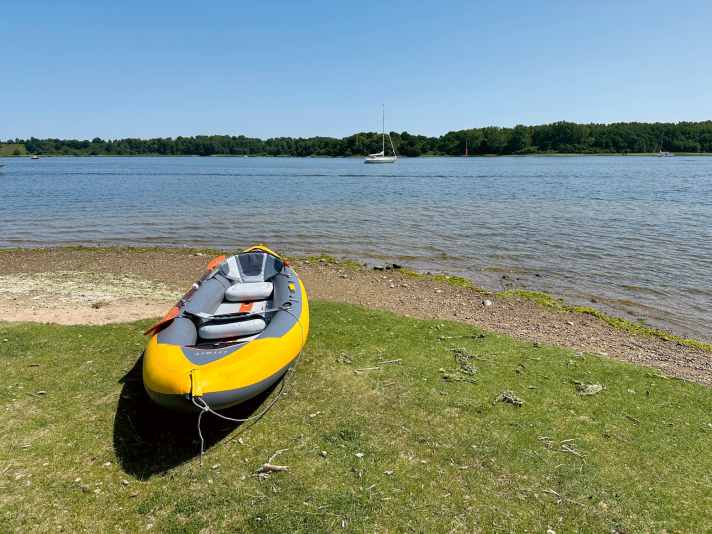
The Tribord kayak (Decathlon's own brand) can be stowed away very compactly and offers space for two people and plenty of payload. Thanks to the high-pressure floor, it is stable in the water and paddles effortlessly. This makes even short trips through the anchor bay fun. Thanks to its three fins, it can be manoeuvred very well in a straight line and can also be towed easily. Made of PVC, the two-seater is very stable and the material can even withstand dog claws. Dimensions: 365 x 103 centimetres, payload 195 kilos. Price: 350 euros >> available here.
SUP: The sports equipment as dinghy

Stand-up paddling has long been more than just a trend on the lake - it has established itself as a real all-rounder on the water. SUP boards are designed for maximum mobility: inflatable, easy to transport and ready to use. Depending on the model, they weigh between eight and twelve kilos and can be shrunk down to a handy pack size that fits easily into a backpack or rucksack. Ideal for anyone who wants to get out on the water spontaneously. The highlight: the SUP is not only a means of transport, but is also suitable as sports equipment and is fun to move around on.
Packraft: white water for the rucksack
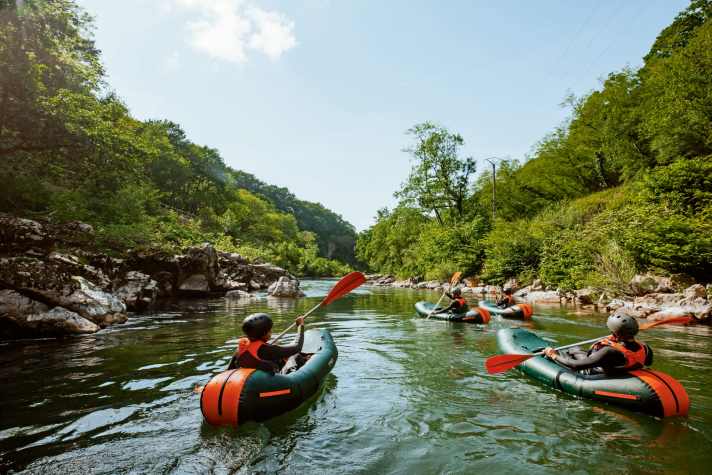
There is another way: packrafts are ultra-light, compact and surprisingly versatile. Originally developed for trekking tours in remote regions, they are increasingly being used by cruising sailors. The basic principle is simple: a packraft is an inflatable lightweight boat that can be folded down to the size of a rucksack. Ideal for those who have little storage space on board. The sporting goods giant Decathlon also has some on offer. The smaller models (>> e.g. available here) weigh only around two kilograms and can be inflated in just a few minutes. They are ideal for short distances from the anchorage to land or short paddling trips.
With simple equipment and a limited load capacity, they are intended more for occasional users - practical if you just want to get to the shore easily. Larger models with a spraydeck offer a little more comfort, providing protected storage space. These boats weigh around four kilos and are therefore heavier, but also much more versatile - for extended coastal tours, river hikes or even light white water. In everyday life on board, packrafts are particularly impressive due to their flexibility: they hardly take up any space, are quickly ready for use and can be stowed away just as quickly after use. Of course, a fixed-hull tender with a motor is more powerful and offers more comfort on long journeys or with a lot of luggage. But if you are looking for a lightweight, mobile solution for short journeys, a packraft is an amazingly practical option. The small boats have even proved their worth with photo teams - for example as a floating platform for taking photos on the water.
Fixed hull boats: A real boat as a dinghy
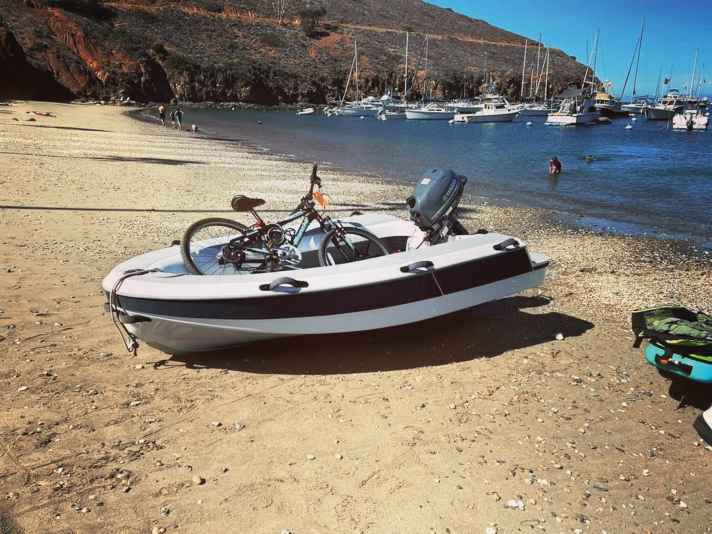
Another alternative to the classic inflatable boat is a real boat - ultra-light, stable and elegant. The German company ASTender specialises in high-quality dinghies made from modern composite materials such as carbon and glass fibre. The boats combine the robustness of a rigid hull with the low weight and easy handling that are otherwise more familiar from inflatable boats. The smallest model measures 2.82 metres in length and 1.59 metres in width - enough for up to four people or a payload of 365 kilograms.
The maximum motorisation is 10 hp. The largest model is almost four metres long, 1.83 metres wide and can carry up to seven people or 550 kilograms. With up to 60 hp engine power, even water sports activities such as wakeboarding or water skiing are possible. However, the boats cannot be folded compactly - so if you want to take an ASTender with you, you need a stern garage, davits or at least enough space on deck. This is not a problem on larger yachts, but on a dinghy cruiser it will be tight.
As the carbon boats are customised, they are priced in the upper segment of this market overview. However, they can be almost completely personalised in terms of design and equipment - from the colour to the layout and equipment details to match the yacht. Conclusion: A high-quality and fully-fledged dinghy. More information: ast-yachts.com
Inflatable boat: all-time favourite
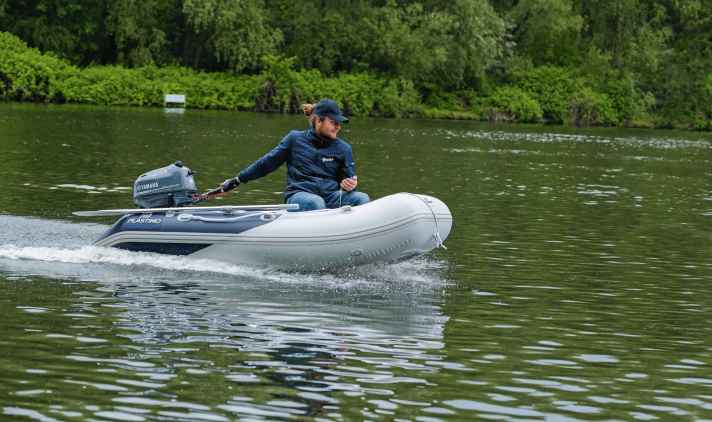
Inflatable boats have always been a classic among small watercraft and are simply part of many yachts. Their inflatable air chambers make them light, compact and practically unsinkable - perfect characteristics for a quick trip ashore or as a flexible transport solution on board. But not all inflatable boats are the same; the floor in particular makes a big difference when it comes to handling, stability and possible uses. In addition to the floor, the material of the air chambers is also important: PVC is cheap and lightweight, while high-quality Hypalon or neoprene provides better protection against UV rays, abrasion and chemicals and lasts longer.
Accessories for the dinghy: More propulsion, more comfort
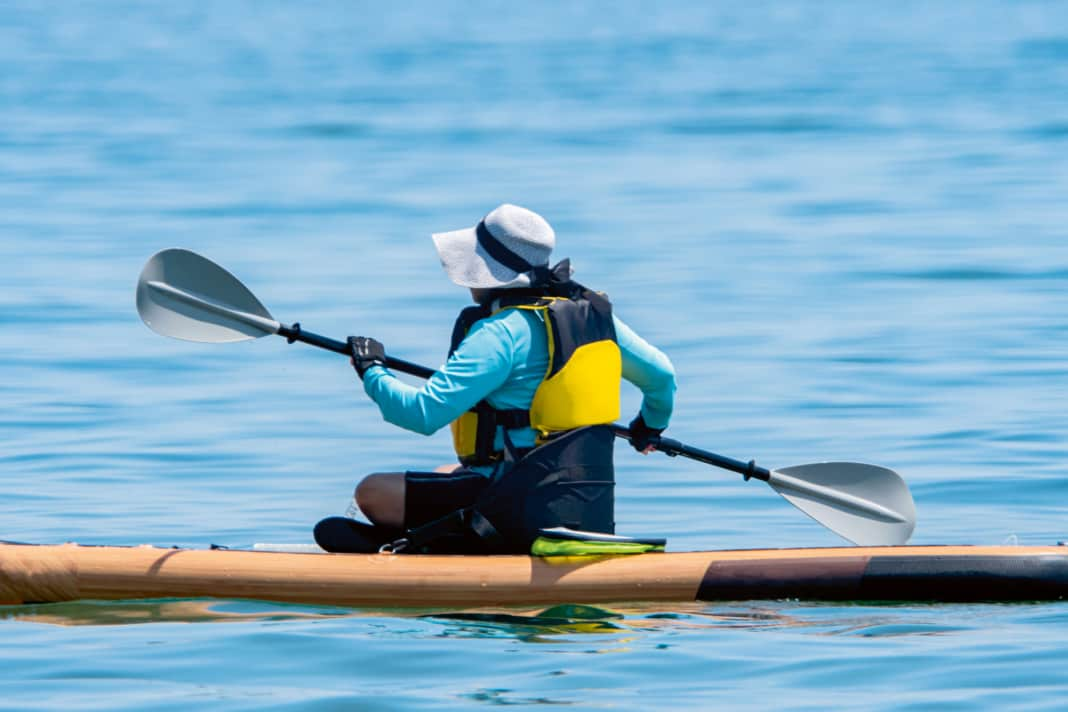





Sit on it!
SUP riding is fun - but standing for hours on end can really put a strain on your legs. If you prefer a more comfortable ride, equip your board with a Folding seat after. The seats with backrests are simply attached to the deck using loops or clips and turn the standing board into a sit-on-top kayak in no time at all. Some models even come with extras such as small bags, holders or water bottle holders.
Air, air, air
Nothing works without air - whether it's a packraft, SUP or inflatable boat: the right pump is always on board. If you want to save space, go for the classic Double stroke hand pump. They are compact, robust and add volume to the boat surprisingly quickly with a few powerful pulls. This is perfectly adequate for smaller boats or occasional use. It becomes more comfortable with electric air pumps. They do the work at the touch of a button and inflate SUPs or dinghies to the desired pressure in just a few minutes - often even with automatic switch-off. They can be operated directly from the on-board battery or the 12-volt connection.
Temo 450 electric outboard motor
The Temo 450 is a compact, lightweight electric outboard motor with 450 watts of power, designed primarily for small inflatable boats, packrafts and SUPs. Weighing around 5 kilograms, it is easy to install and transport. The motor achieves speeds of around 3 knots and offers an operating time of around 60 to 80 minutes.
Integrated or external
Of course, there are now also electric motors for SUPs. Some can simply be plugged into the fin mount at the rear and are controlled by remote control - such as the SUP glider drive. Special boards with an integrated motor solution are also available. A good example is the SipaBoard, where the electric jet drive is built directly into the board.
Manual propulsion for the dinghy
A good paddle is often underestimated, but it has an enormous influence on comfort, efficiency and fun on the water. Above all, the right length is crucial - this varies depending on the intended use. For stand-up paddling, the paddle should be around 15 to 20 centimetres longer than your height. When paddling a kayak or packraft, seat height and boat width also play a role in addition to body height. Rule of thumb: the wider the boat, the longer the double paddle should be, roughly in the range of 220 to 240 centimetres.
Let the wind do the work
Kayak sails are a clever addition for anyone who is travelling on longer tours and wants to make use of the wind. Pop-up sails are particularly popular - round, foldable models that can be quickly unfurled in a tailwind. They weigh almost nothing, do not require fixed mounting and can be easily controlled by hand or steering line.

